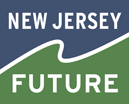Bicycle and Pedestrian
New Jersey ranks third among states in the percentage of households not owning a vehicle (11.2 percent) and seventh for households owning either one or zero vehicles (44.8 percent).
Yet, since 1970, vehicle miles traveled in New Jersey has increased at a rate more than triple the rate of growth of the state’s population—thanks in large part to the sprawling, auto-dependent development that prevailed through most of the second half of the last century. This increase has helped make transportation the largest, and fastest-growing, contributor to the state’s overall carbon footprint.
With these numbers in mind, it makes sense to encourage pedestrian and bicycle behavior by constructing safe roads and routes that accommodate all users. New Jersey Future is an advocate for “Complete Streets,” ensuring that roadways are designed and operated to enable safe access for pedestrians, bikes, other non-automotive transportation options, and the disabled, not just cars.
Riding a bicycle or walking represents an affordable and convenient way to get around, particularly for short distances, and travel by bike or foot can also help people get more active. Our environment—physical, social and cultural—affects our daily behavior. If we want to encourage healthy choices every day about eating and physical activity, we need environments where such choices are available, affordable and easy. As New Jersey strives to reduce emissions from the transportation sector in order to meet its greenhouse gas reduction goals, turning these short auto trips into a walk or a bike ride would be a good place to start.
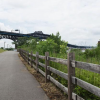
As the nation’s most densely populated state, New Jersey packs in more people per square mile than anywhere else. Our most vibrant cities and towns include compact, walkable downtowns and active streetscapes—complemented by accessible greenways and trails for recreation, a respite from urban life, and healthy, carbon-free travel. But being the Garden State, we can do so much more.
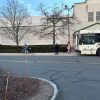
Simple, small-scale transportation features make a community a safer, healthier, and more affordable place to get around. In a community that values street safety, crosswalks are clearly marked and strategically placed to ensure easy and safe passage for pedestrians.
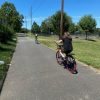
The Infrastructure Investment and Jobs Act (IIJA) was signed into law by President Joe Biden on November 15, 2021, investing $1.2 trillion in America’s infrastructure. From the IIJA, New Jersey municipal, county, and state governments have the opportunity to tap into once-in-a-generation funding programs, many of which support safe and accessible transportation alternatives for walkers, bikers and rollers.

“Every decision about transportation is an opportunity to build a clean, healthy, and more prosperous future,” declared Christopher Coes, Assistant Secretary, U.S. Department of Transportation (DOT) as he provided prepared remarks to open the session “Delivering Walk-Bike-Ride Transportation in New Jersey” at the 2023 Planning and Redevelopment Conference co-hosted by the NJ Chapter of the American Planning Association and New Jersey Future.
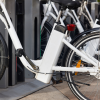
Electric bicycles, along with programs intended to incentivize their adoption, are rolling out across the country and New Jersey can’t afford to be left behind in this transportation revolution. Transportation emissions, which account for more than a third of all total greenhouse gas emissions in the state, are a critical target for climate change mitigation, necessitating the use of every tool to help us drive less.
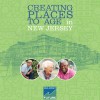
There is a significant mismatch in New Jersey between where large numbers of older residents live and which municipalities are most prepared to accommodate them. This report matches every municipality against four age-friendliness indicators, and analyzes the degree to which New Jersey’s older residents are living in places that, from a land-use perspective, are not prepared to accommodate their changing needs. January 2014.
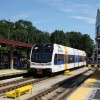
New Jersey has 243 transit facilities, ranging from small single-track stations to major multi-line hubs. The unique characteristics of each station, of its immediate neighborhood, and of its surrounding municipality mean that a wide variety of development strategies should be brought to bear in order to maximize each location’s potential. This report shows how data assembled by New Jersey Future can be used to make decisions on how to target various kinds of transit-oriented development efforts. September 2012.
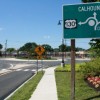
An assessment of how comprehensively New Jersey’s Department of Transportation has implemented its Complete Streets Policy. September 2011.
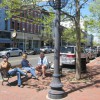
2013 Smart Growth Awards: A comprehensive policy, along with a strong outreach effort, is helping the State of New Jersey and its municipalities re-envision streets in order to consider the needs of all users.
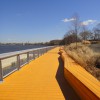
2014 Smart Growth Awards: Extensive public participation helped guide the return of Newark to its waterfront roots and the planned redevelopment of its riverfront neighborhoods.
See all New Jersey Future Blog posts and articles in this category »
Reports, Presentations and Testimony
- Trenton Transit Center Strategic Action Blueprint July 2018
- New Jersey Future Demographic Trends by Age September 2017
- New Jersey Future 2017 Gubernatorial Platform
- New Jersey Future Housing Affordability and Aging-Friendly Communities
- Housing Affordability and Aging-Friendly Communities Housing Cost-Burden Municipal Data by Municipality
- Housing Affordability and Aging-Friendly Communities Housing Cost-Burden Municipal Data by Cost Burden Rank
- Creating Great Places To Age in New Jersey
- Creating Places To Age in New Jersey municipal data
- Creating Places To Age Bergen-Passaic Supplement
- 10/01/2012 Final NJ_MAP-21_letter
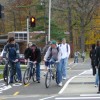
- complete-streets-report-FINAL-web
- ShapingNJ Community Pilot Meeting Overview 06-09-11
